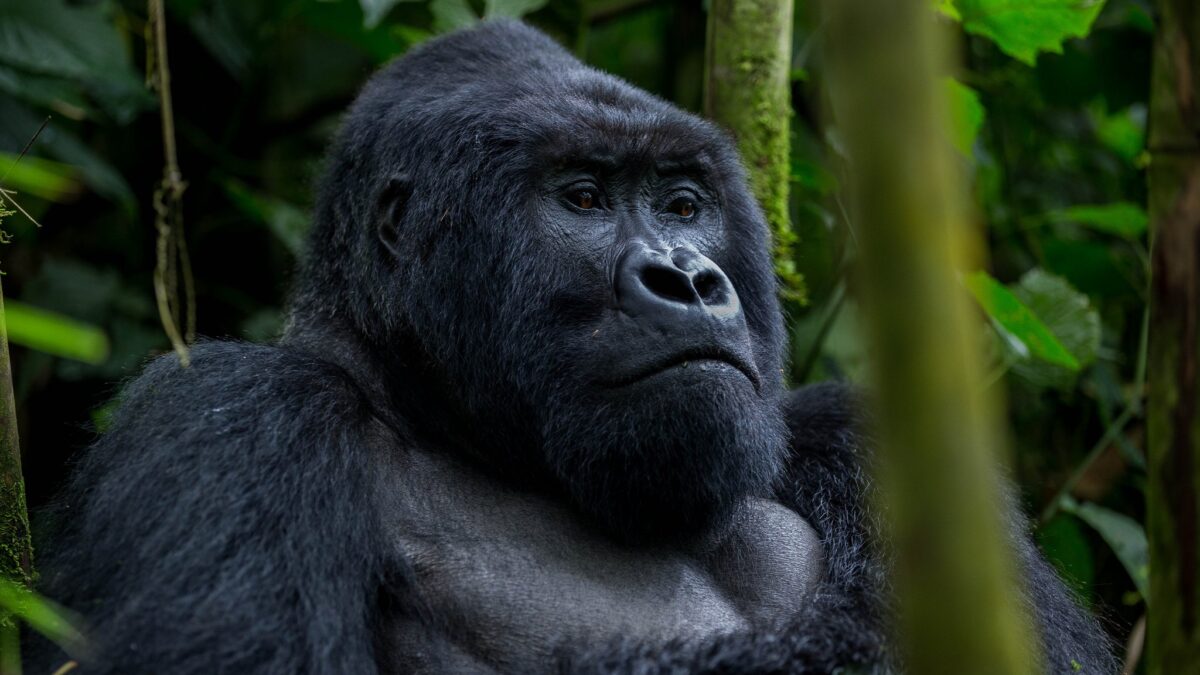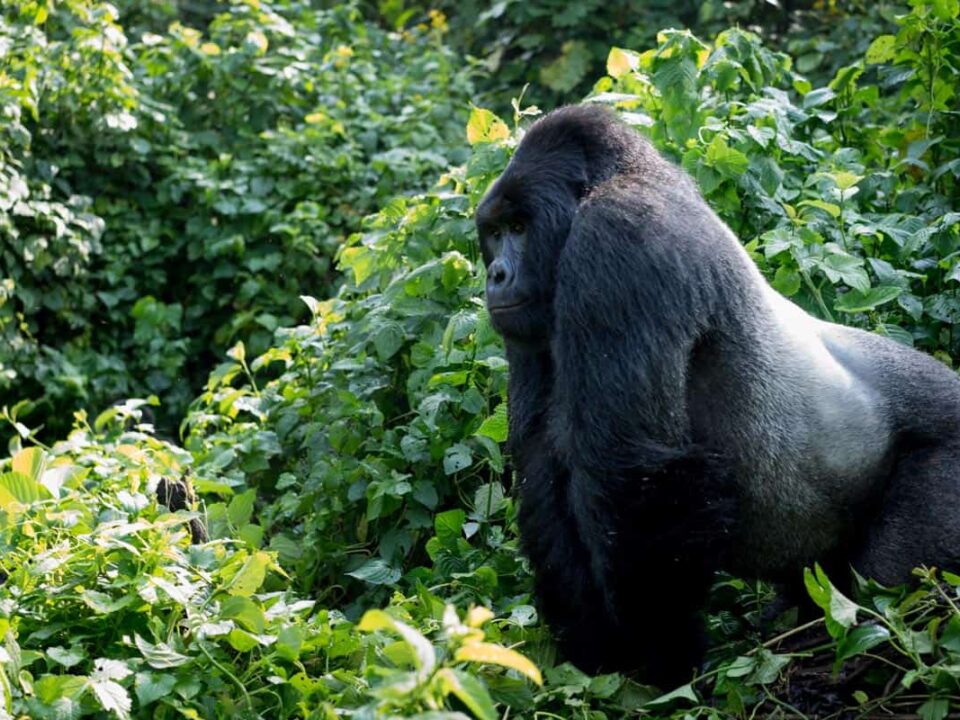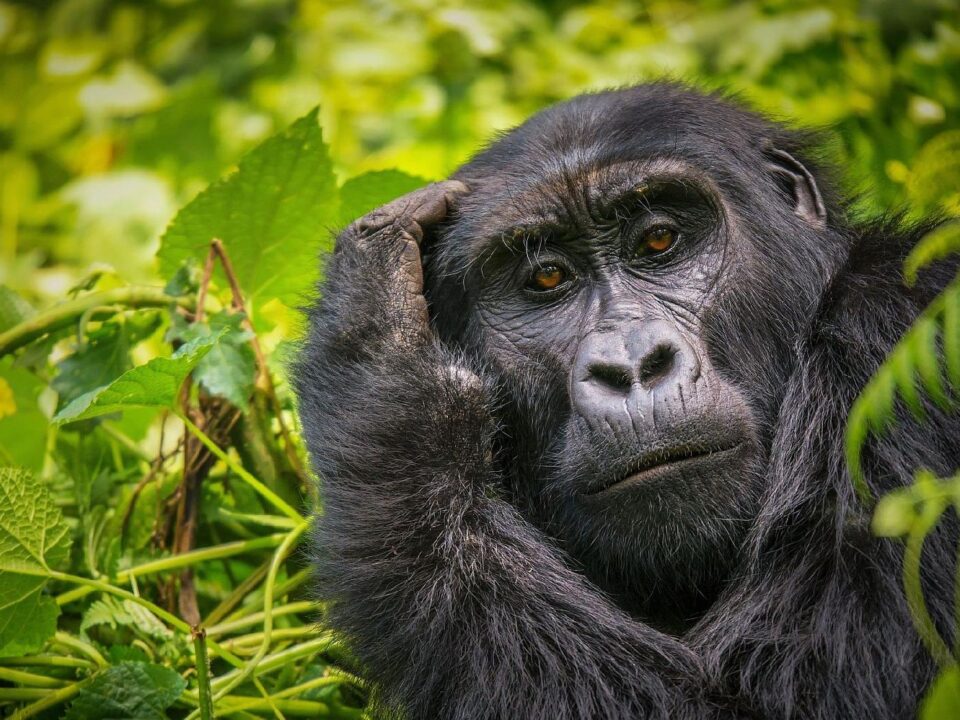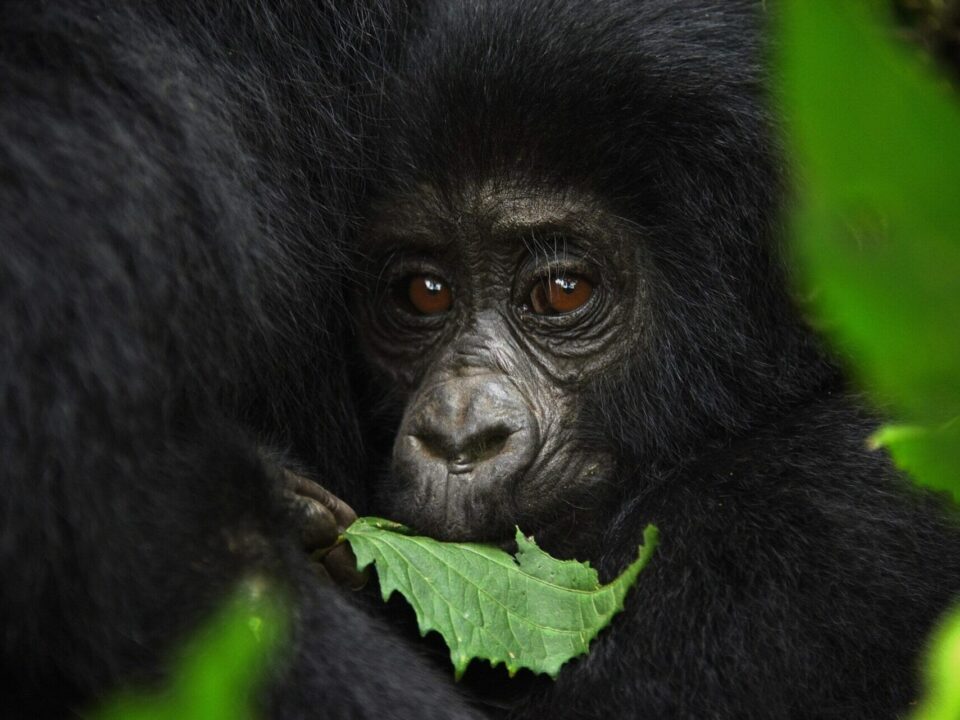How to see Mountain Gorillas in the Wild?

Top places to see African Mountain Gorillas in the wild
February 6, 2024
Gorilla Trekking Fitness
February 6, 2024Guide to Witnessing Mountain Gorillas in their Natural Habitat – How to see Mountain Gorillas in the Wild?
How to see Mountain Gorillas in the Wild? — Embarking on a journey to witness mountain gorillas in the wild is a unique and transformative experience. Despite being endangered, the global population of mountain gorillas has quadrupled over the past four decades. Understanding the delicate interplay between these gentle giants, the local communities, and your role as a visitor is crucial for both enjoying this remarkable encounter and contributing to the conservation efforts. Here’s a comprehensive guide to help you prepare for and partake in the awe-inspiring experience of seeing mountain gorillas.
Differentiating Between Mountain Gorillas and Lowland Gorillas
While lowland gorillas may be spotted in zoos, encountering mountain gorillas requires trekking at high altitudes in central Africa. Mountain gorillas inhabit only three countries: Uganda, Rwanda, and the Democratic Republic of Congo.
There are two distinct populations of these endangered species—one residing in Uganda’s Bwindi Impenetrable Forest and the other in the Virunga Mountains shared by Rwanda, Uganda (Mgahinga Gorilla National Park), and the Democratic Republic of Congo (Virunga National Park). These creatures cannot thrive in captivity and prefer altitudes between 7,200 to 14,100 feet above sea level.
Choosing the Ideal Country for Mountain Gorilla Observation
Due to political instability in the Democratic Republic of Congo, the preferred countries for mountain gorilla sightings are Uganda and Rwanda. Uganda boasts 19 habituated gorilla families for tourist visits, outnumbering Rwanda’s 10. Trekking in Uganda can be more challenging, especially in Bwindi Forest, where gorillas may be in close proximity or far from the base camp on any given day. Rwanda offers higher elevation trekking.
Uganda also provides lower accommodation and gorilla permit costs, with a diverse range of wilderness lodging options. In Rwanda, travel distances are shorter, and road conditions are better, with a prevalence of English in tourist centers. Trekking in Uganda offers additional activities like savannah and boat safaris, chimpanzee trekking, and visits to the source of the Nile.
Importance of Tourism in Mountain Gorilla Conservation
Responsible tourism plays a pivotal role in safeguarding mountain gorillas. Despite the relatively high cost of gorilla permits, this expense directly and indirectly contributes to gorilla protection. Portions of the permit fees support National Park rangers, veterinarians, and trackers, ensuring the health and safety of mountain gorillas. Additionally, these funds benefit local communities, providing essential resources such as clean water, food, healthcare, education, jobs, and political stability.
Habitat loss poses a significant threat to mountain gorillas. The funds generated through gorilla trekking help address the needs of communities living near gorilla habitats, fostering an interdependent and sustainable tourism industry that ultimately supports conservation efforts.
Habituation of Mountain Gorillas
Habituating mountain gorillas to human presence has played a crucial role in population growth. In 1981, the population was a mere 254 individuals, and today, there are over 1,000, marking a 25% increase since 2010. The habituation process involves assigning a group of trackers to each gorilla family, consisting of local men and women familiar with the forest and trained park rangers, some of whom were former poachers.
Mountain gorillas are elusive, moving constantly throughout the day and creating new nests for sleep each night. Trackers locate the nests in the morning and communicate with rangers at the base camp to guide tourists in the right direction. Trackers monitor the gorillas for signs of injury, illness, stress, pregnancies, births, and potential threats. Their efforts contribute to a success rate of over 99%, ensuring the sustainability of gorilla trekking.
When to Experience Mountain Gorilla Trekking
Mountain gorilla trekking is possible throughout the year, but challenges intensify during rainy seasons. Uganda experiences two rainy seasons, from mid-March to the end of May and from October to November. Rwanda’s rainy season spans the end of February to May. Rain can be advantageous, as gorillas may feed at lower elevations, shortening trekking distances.
Uganda’s main dry season, from June to September, is the busiest period, coinciding with the Christmas season. The shorter dry season of January and February offers optimal conditions for a visit. In Rwanda, dry seasons are from June to September and from mid-December to mid-February.
For detailed information on mountain gorilla tracking, additional links are provided, covering topics such as minimum age requirements, safety considerations, physical fitness, attire, trekking rules, and the overall worthiness of the experience.
Essential Travel Preparations for Gorilla Trekking
Before embarking on a mountain gorilla trekking adventure, travelers must address certain practical considerations:
The Impenetrable Forest of Bwindi:
Gorilla trekking in Bwindi Forest can be physically demanding. Participants should be mentally prepared for challenging hikes, involving navigating steep slopes, using vines for support, and potentially encountering muddy conditions.
Porter Services:
Hiring a porter is recommended, especially for those concerned about the strenuous trek. Porters assist not only in carrying gear but also in navigating difficult terrains. The cost of hiring a porter in Bwindi Forest is USD20.
Visas and Vaccines:
Travelers, including Americans, require a visa for entry into Uganda and Rwanda. Passport validity of six months beyond the planned departure date and a blank page per country visited are essential. Visas can be obtained online or on arrival, with fees varying. Proof of Yellow Fever Vaccination is mandatory upon arrival.
Malaria Prevention:
Uganda and Rwanda are malarial regions, necessitating antimalarial medication and effective bug spray to combat mosquito-borne diseases.
Health Considerations:
Participants experiencing severe altitude-related symptoms or any illness should refrain from trekking to avoid endangering the gorillas. Refunds or rescheduling may be available for genuine health concerns.
Conclusion
Gorilla trekking is a remarkable and challenging adventure that offers a rare glimpse into the lives of mountain gorillas. Responsible tourism practices, adherence to trekking guidelines, and consideration for the local communities contribute to the conservation of these endangered species. By planning and undertaking this journey thoughtfully, visitors not only witness the incredible world of mountain gorillas but also play an integral role in their preservation.




